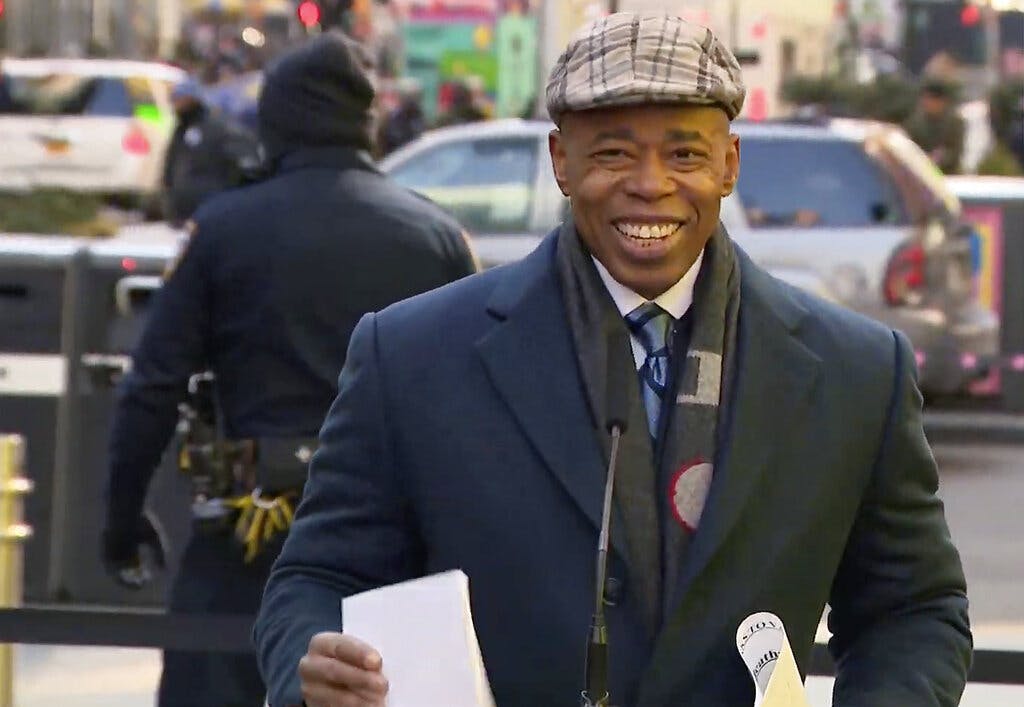New York City Rent Hike Would Be a Windfall Mainly for Big Landlords
While the increase could boost some ‘mom and pop’ landlords, as the mayor has emphasized, the majority of the revenue would go to the larger players.

A proposed rent hike on rent-controlled apartments that would be much higher than in recent years has thrust “mom and pop” landlords into the public eye, as Mayor Adams contends these smaller entities need the extra money to stay in business.
Critics have argued that the mayor is too close to big real estate, leading to questions on who would actually be benefiting from the rent hike. The data show that, for the most part, it’s not “mom and pop.”
In his state of the city speech, Mr. Adams said the city “must commit to creating the affordable housing that New Yorkers have needed for so long.”
“Housing cannot be a privilege for those with supportive families or generational wealth,” he added. “It is the key to living a good life in the greatest city in the world.”
At the same time, Mr. Adams has found himself in hot water for refusing to push back against the Rent Guidelines Board’s proposed rent hike of up to 9 percent over the next two years.
Specifically, the board recommended 2.7 percent to 4.5 percent increases for one-year leases and 4.3 percent to 9 percent increases for two-year leases, ranges that the board chairman, David Reiss, described as “a starting point.”
This rent hike would affect nearly a million apartments, according to the city, making up roughly 40 percent of the city’s total housing stock.
The move would also stand in stark contrast to the biggest rent hikes under Mayor de Blasio: 2.75 percent on two-year leases in 2014 and 1.5 percent on one-year leases in 2018.
Mr. Adams maintains that such a hike is necessary.
“We don’t want to aggravate the eviction process, but we also got to look at small property owners,” he said, citing “mom-and-pop” landlords who he said would be affected by a lesser rise in rents.
The proposed rent hike drew immediate criticism from the City Council speaker, Adrienne Adams, who said it is “unconscionable to propose a rent increase of up to 9 percent for renters, which would only exacerbate the housing and homelessness crises confronting our city.”
A Democratic City Council member of Brooklyn, Lincoln Restler, agreed, writing: “The Rent Guidelines Board is trying to pull the rug out from working class New Yorkers by recommending rent increases as high as 9% over 2 years.”
Landowner groups argue that a large rent increase is needed due to factors such as rising fuel (19.6 percent), insurance (10.9 percent), and maintenance costs (3.7 percent) over the past year.
“Today’s report illustrates that the expense bellwethers across the board have skyrocketed, led by heating oil, but also utilities, maintenance, labor and insurance,” the president of the Rent Stabilization Association, a landlord organization, Joseph Strasburg, said in a statement.
Amid a political battle that could affect the bottom lines of nearly a million households, who stands to benefit most from a large rent hike?
Most of New York’s apartments are owned by larger landlords, according to public Department of Housing Preservation and Development data. More than half of the Big Apple’s rental properties are owned by landlords with portfolios of more than 20 buildings.
According to housing advocacy group JustFix.NYC’s analysis of public HPD data, 27 percent of the city’s rental apartments are owned by landlords with more than 60 buildings and 24 percent are owned by those with between 20 and 60 buildings.
Mid-size landlords, with between six and 20 buildings, own about 20 percent of the city’s apartments, while smaller landlords own just less than 30 percent of the city’s rental housing stock.
Landlords with between two and five buildings own about 15 percent of the city’s rentals and landlords with just one building account for about 13 percent of the city’s apartments.
With that being said, rent regulated apartments only account for about 10 percent of apartments owned by landlords who own only one building and just more than 20 percent of apartments owned by landlords with between two and five buildings.
That percentage jumps to about 40 percent for landlords of between six and 20 buildings and more than 50 percent for landlords who own more than 60 buildings, according to JustFix.NYC’s analysis.
“Larger landlords were more often the owners of rent-regulated buildings and are more often responsible for evictions,” analyst Sam Rabiyah wrote of the matter.
This means that, though the 9 percent rent increase could be a necessary increase in revenue for some smaller “mom and pop” landlords, the majority of the revenue will be a windfall for large landlords often owning over 60 buildings.

